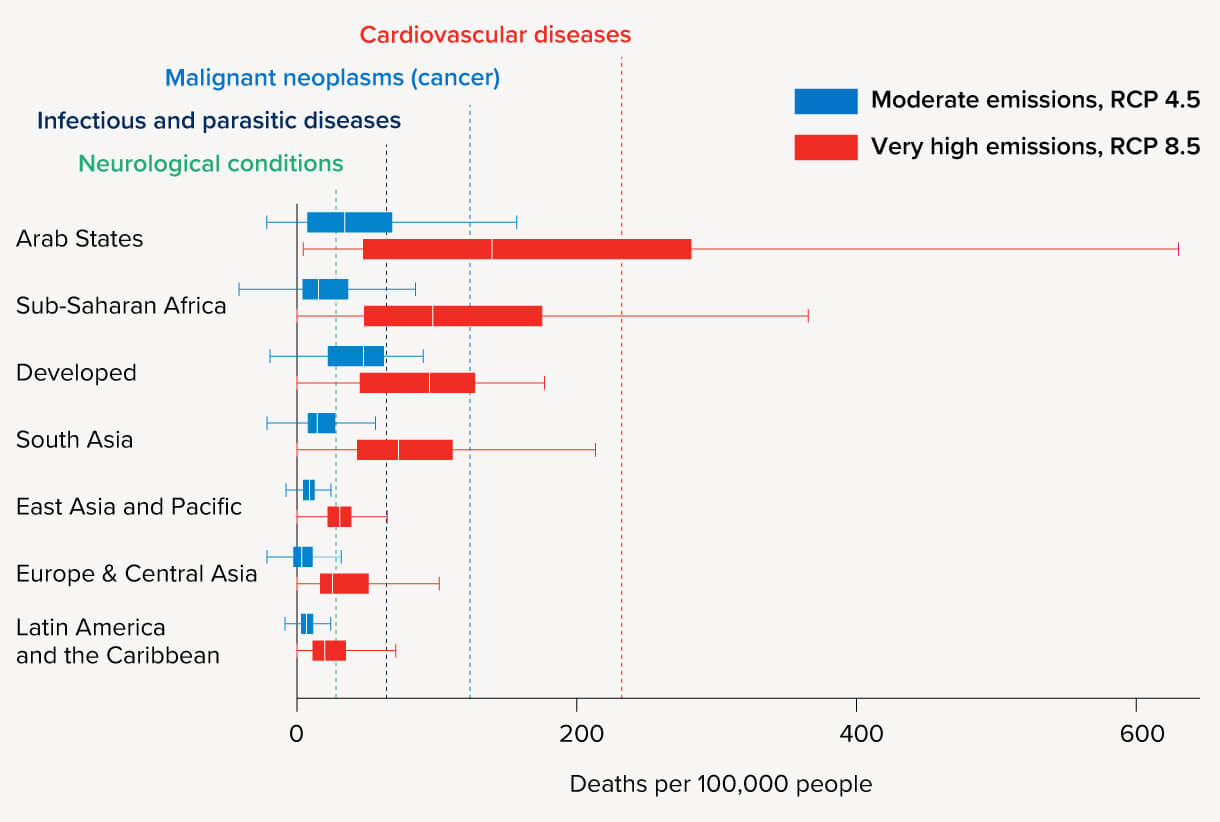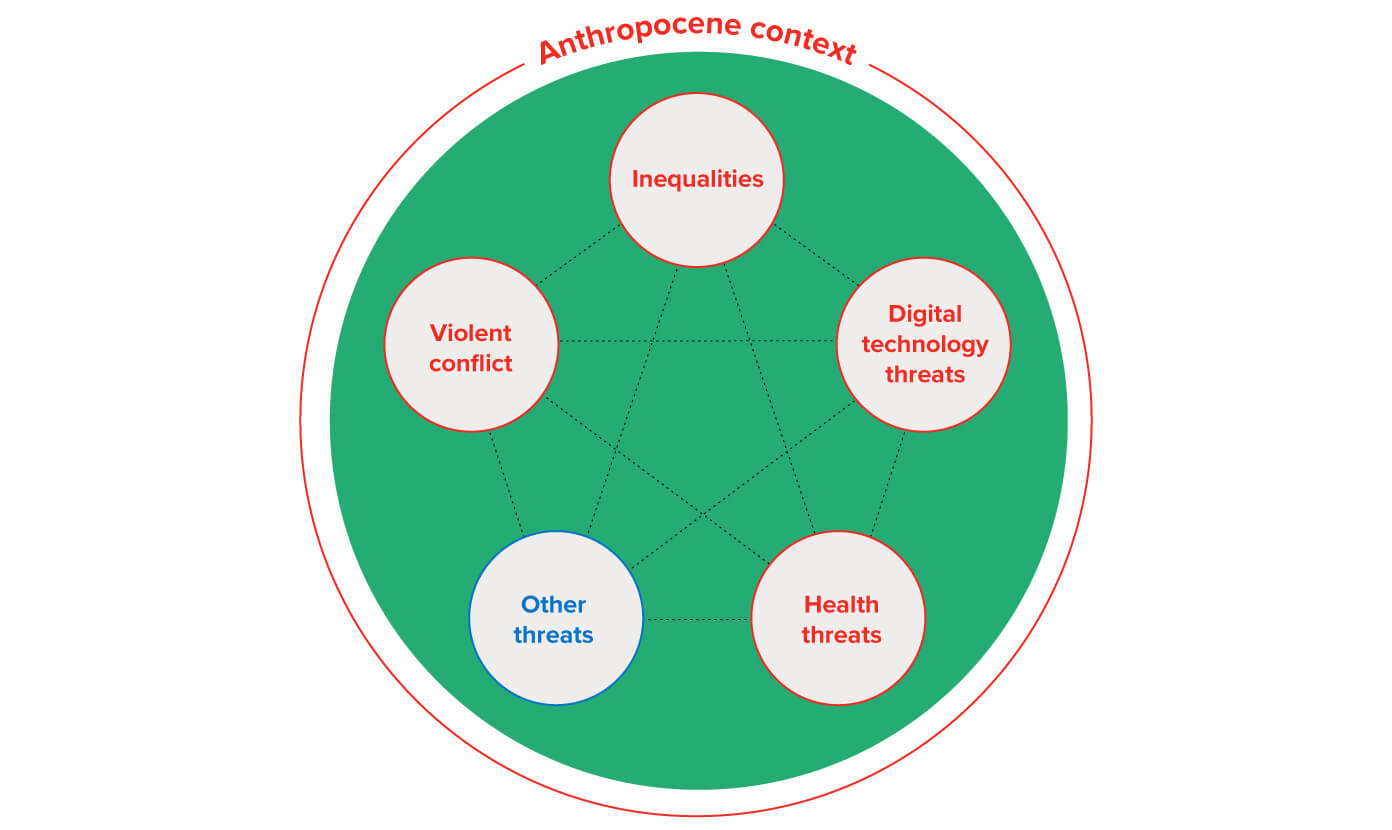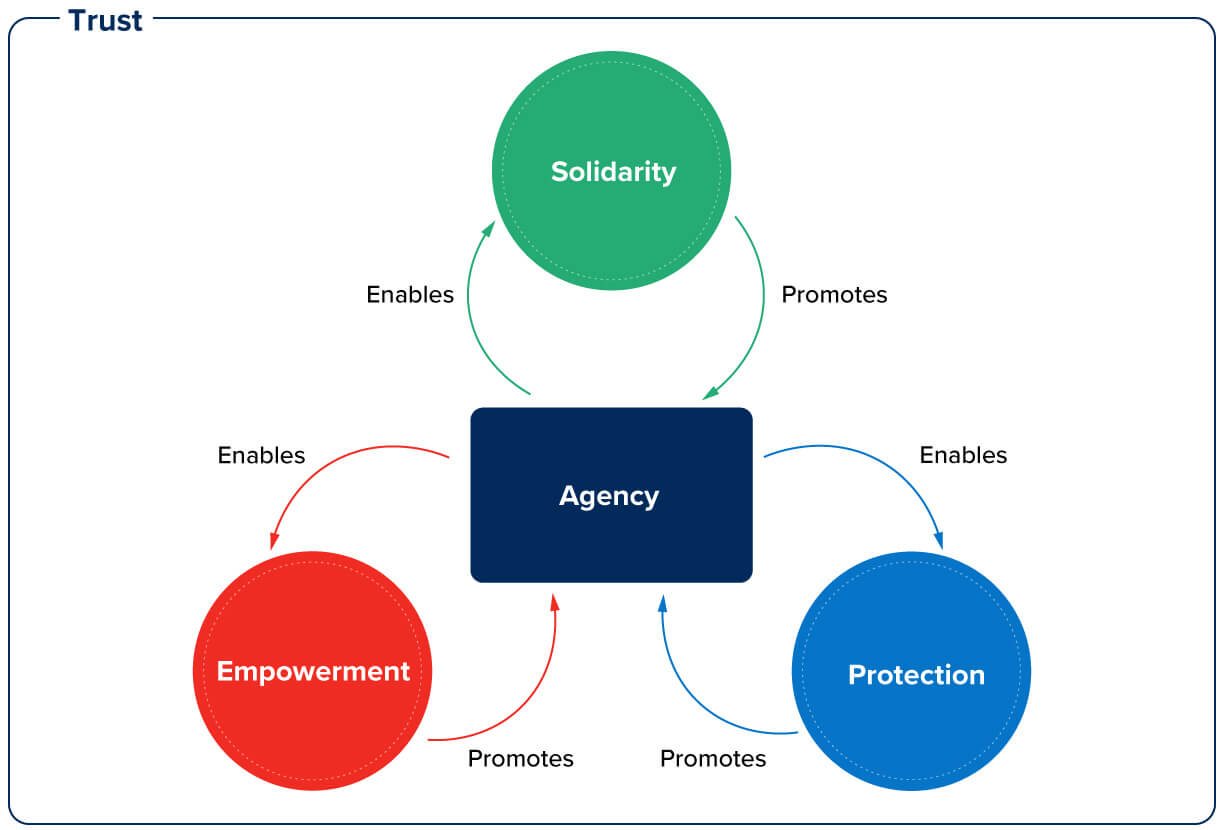Part I
Expanding human security through greater solidarity in the Anthropocene
Behind this development-security disconnect looms the Anthropocene context. Development approaches with a strong focus on economic growth over equitable human development have led to stark and growing inequalities and destabilized processes at the planetary scale. Our pursuit of development has neglected our embeddedness in nature, leading to new threats as a byproduct of development: worsening health, increased food insecurity, and more frequent disasters. Climate change alone—beyond the effect of pollution or zoonotic diseases—is expected to have significant effects on mortality. By 2100 the number of estimated deaths associated with climate change (in a scenario with very high GHG emissions) could be comparable to some of the leading deaths causes today (figure 3).
Figure 3 In a very high emissions scenario, some regions of the world might face climate-change induced mortality rates similar to the main causes of deaths today

The Report revisits the human security concept to understand what it implies for the Anthropocene context.
When introduced in 1994, the human security approach refocused the security debate from territorial security to people’s security. This idea, which the UN General Assembly endorsed in 2012, invited security scholars and policymakers to look beyond protecting the nation-state to protecting what we care most about in our lives: our basic needs, our physical integrity, our human dignity. It emphasized the importance of everyone’s right to freedom from fear, freedom from want and freedom from indignity. It highlighted the close connection among security, development and the protection and empowerment of individuals and communities.
In part 2, this Report explores how the new generation of interacting threats, playing out in the new context of the Anthropocene: the downsides of digital technology, violent conflict, horizontal inequalities, and evolving challenges to healthcare systems (figure 4).
It is the interconnected nature of these threats, which calls for a new approach that goes beyond tackling them individually when designing or evaluating policy.
Figure 4 The new generation of human security threats

This Report argues for an expansion of the human security frame, adding solidarity to the human security strategies of protection and empowerment proposed by the Ogata-Sen Report (2013).
Solidarity recognizes that human security in the Anthropocene must now go beyond securing individuals and their communities; to consider systematically the interdependence across people and between people and the planet. It is protection, empowerment and solidarity working together that advances human security in the Anthropocene context.
Alarmingly, the Report also finds that perceptions of human insecurity are associated with low interpersonal trust, independently of one’s financial situation.
In addressing human insecurity how do we attend to the conditions of trust—across people, between people and institutions, across countries?
This Report takes the view that agency lies at the core of an expanded human security framework (figure 5). Agency reminds us that wellbeing achievements alone are not all we should consider when evaluating policies or assessing progress. Agency will also help avoid the pitfalls of partial solutions, such as delivering protection with no attention to disempowerment or committing to solidarity while leaving some lacking protection.
Figure 5 Enriching human security for the Anthropocene

Part II